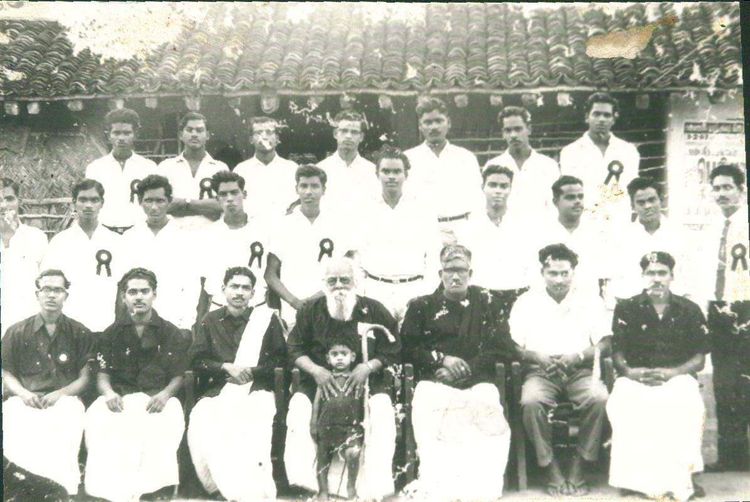Understanding the complex legacy of Periyar
Updated by admin on
Sunday, July 14, 2024 12:21 AM IST

Understanding the complex legacy of Periyar:
It is more than 46 years since the passing of Erode Venkatappa Ramasamy, later known as EVR and Periyar, yet he continues to dominate Tamil Nadu’s political space.
The controversy stoked by actor Rajinikanth’s recent reference to the 1971 anti-superstition conference in Salem of the Periyar-led Dravidar Kazhagam has not died even after a fortnight as some AIADMK ministers have entered the fray asking Rajinikanth to tender an apology for trying to discredit Periyar.
Such has been the extent of Periyar’s dominance that any party that claims to have a Dravidian tag has to defend him, even if he had committed an indefensible act. While political parties concede that it was morally wrong to burn images or portraits of Rama, Sita and Lakshmana as Periyar and his supporters sought to do right from the 1950s, they deem it to be politically correct to be seen as Periyar supporters. As his contribution in terms of the social reforms, became the foundation of the Dravidian parties.
Periyar’s diatribe against the Brahmins could have resulted in the movement towards a casteless society going off on a tangent, but he had a creditable record of having fought for women’s rights, including the right to property, widow marriage, self-respect and intercaste marriages, rights for entry of dalits, Tamil archakas and Tamil mantras in temples, reservation in educational institutions and government jobs. As Periyarists would like to say, let us not throw out the baby with the dish water.
What is surprising, however, is the lack of awareness about Periyar and DK’s acts of burning portraits or effigies of the Hindu gods. The 1971 Salem act was not the first nor was it the last. While some rationalists, seen as Periyarists, have sounded almost defensive on the issue, Periyar himself had made no bones about it. The act of burning Rama pictures by Periyar was to counter the Ram Leela held with gusto in Delhi during the Dussehra festival. Periyar called for celebration of Ravana Leela to counter the Rama Leela, his argument being that Ramayana sought to perpetuate the Aryan domination over Dravidian ‘Sudran’, Ravana of Tamil origin.
Earlier, in 1953, Periyar organised agitations for the desecration of Ganesha idols. He had said in a speech in 1953, “We have to eradicate the gods who are responsible for the institution which portrays us as sudras, people of low birth, and some others as Brahmins of high birth... We have to break the idols of these gods. I start with Ganesha because it is he who is worshipped before undertaking any task.” In 1956, Periyar publicly announced an agitation to burn pictures of Rama on the Marina beach. Paula Richman, in ‘The Diversity of a Narrative Tradition in South Asia’ (Chapter 9: E.V. Ramasami’s Reading of the Ramayana) described in detail the events leading up to the burning of Rama’s pictures. “On the first day of August in 1956, E. V. Ramasami (henceforth E.V.R.) set out for the Madras Marina to lead his followers in burning pictures of Lord Rama, hero of the Ramayana. This symbolic action would represent a reversal of the culmination of north Indian performances of the Ramayana, in which images of the epic’s villain, Ravana, are put to the flames as spectators watch in delight.” The account goes on to detail how political leaders implored Periyar to cancel the event so as not to offend orthodox Hindu Tamils. P Kakkan, president of the Tamil Nadu Congress Committee, argued that the desecration of Rama images would constitute an “anti-social” act that would betray the faith in God by which Gandhi won Independence, but EVR remained unmoved, noting that “there was bound to be a difference of views regarding any measure aimed at bringing social reform”.
In 1971 too, Ravana Leela was a fixture at the Salem conference. This was published in detail by the DK daily, ‘Viduthalai’, which was not only unapologetic, but also hailed the burning as a celebration by more than two lakh Tamils assembled there.
In an article on Periyar, Cho Ramasamy had said, “There was no shade of hypocrisy in him (Periyar) and he never attempted sophistry while propounding his social philosophy.” The former Tughlak editor went to say that though EVR is still hailed as one of the leaders of the Tamil people, his philosophy is hardly valued. He fought superstitions, but his followers in the AIADMK tonsured their heads for the good health of their former leader J Jayalalithaa; he cursed the caste, now offshoots of his movement — the DMK and the AIADMK — are using caste politics to fight elections, and more caste-based parties have come up in Tamil Nadu; he was the apostle of secession, but his followers swear allegiance to national integration. Cho aptly surmised the idea of the man, saying, “Periyar the singer was admired, his song was ignored. As a man Periyar was the embodiment of civility, which is why he is still loved. The man was greater than his message.” Something that is ought to be remembered now.
By R. Rangaraj
(The writer is a veteran journalist)